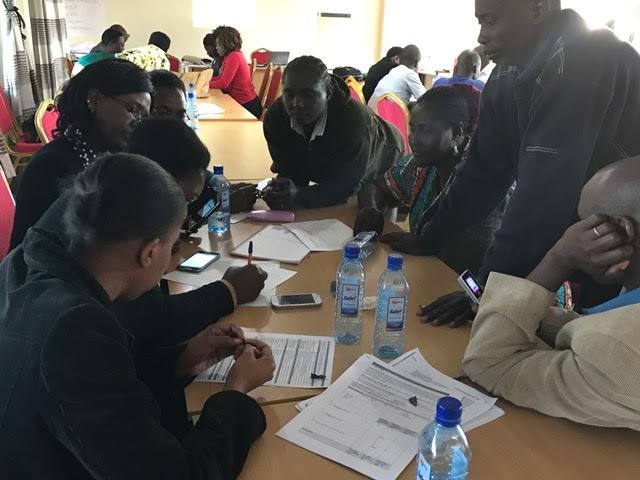Quality Improvement training: A tool to empower Community Health Volunteers to document and improve their work
Tuesday, 05 Dec 2017

By Linet Okoth and Lynda Keeru
In Kenya, Community Health Volunteers (CHVs) are arguably one of the most important and useful cadres of health services providers because:
- They live within the community and regularly interact with the community members that they serve
- They gather the data at the community level
- The data they collect is used to make decisions at higher levels
- They complement the low ratio of doctors to patients/clients especially in Sub- Saharan Africa
- While they carry out the household visits, they have a firsthand opportunity to pick up on issues being faced by the community and addressing them early enough before they get to a point of care and treatment
CHVs generate data at the lower level which feeds to the facility, sub county, county and national level health information systems. Their data is used to make informed decision on health priorities or focus. It is essential that they collect accurate data and information so that this analysis can inform decision making among policy makers.
Since the implementation of the Community Health strategy in Kenya in 2006, CHVs have been creating demand for referrals and conducting household visits. However, we could do more to track the impact of their work. The tracking and documentation of CHV activities is important because we need to see which areas of their work need further support, for example through training and tools, and respond appropriately.
The USAID SQALE program was the first intervention in Kenya to provide Quality Improvement training at the community level. Previously, counties were training participants from facilities and at the management level. The design of the Kenya Quality Model for Health (KQMH) did not include CHVs as part of the teams that should be trained on quality. This represented a significant gap and meant that the opinion of community members who are very influential in increasing the uptake of services was missing leading to persistent weaknesses in maternal and child health.
How do we define Quality Improvement?
In USAID SQALE we believe that quality in Community Health Services is meeting or exceeding client and communities’ expectations. It is client-centred and places the needs and preferences of the individuals and communities at the core.
Quality Improvement is a systematic process of assessing performance of a health system and its services. The process involves the identification of challenges that are being faced, analysis of the root causes of these issues, and the introduction of measures to improve quality and ensure systematic monitoring their impact.
Quality Improvement has been used in the past in relation to HIV and Maternal and Maternal, Newborn and Child Health. But it was commonly used in hospitals to identify service delivery gaps and address them in the best way possible.
What did we do?
Introducing training on Quality Improvement among CHVs has been one of the greatest achievements in community health services. We organized CHVs, Community Health Extension Workers, Facility-in-Charges, and community members (among others) into teams known as Work Improvement Teams (WITs). The WITs comprised different stakeholders at the community level whose key role is to address quality issues to improve health service uptake and provision of quality services. They do this by having monthly meetings where they identify and discuss challenges in the delivery of Maternal, Newborn and Child Health services at the community level and brainstorm possible solutions. The Quality Improvement training taught them concepts and tools related to identifying, prioritizing, and analyzing problems and thereafter supported them in coming up with local solutions which could be implemented and monitored to see what impact they had.
This approach was embraced by the CHVs and it gives them confidence to meet in the facility since the facility nurse and the Health Facility Committee chair are part of their colleagues in the Work Improvement Team. This has given them an excellent understanding of the relationship and flow of services between the facility and community and vice versa and enabled them to feel ownership of work that happens in the facility. Quality Improvement has also facilitated documentation of the work of CHVs, especially with reference to the data they collect at the community level. It has helped escalate this data to the sub-county, county, and national levels for decision making on how best to improve services offered to the community. CHVs are now able to analyze the data they collect themselves. For example, CHVs are now in a position to identify mothers who do not attend clinics and make a follow up visit in good time. They also identify home deliveries and refer the mothers early after child birth.
We now have sufficient evidence to say that quality improvement at the community level is feasible and can have positive impacts, we hope that it will be spread to other sub-counties that are not currently included in the USAID SQALE program and that our work prompts other counties to experiment with the model that we have developed.